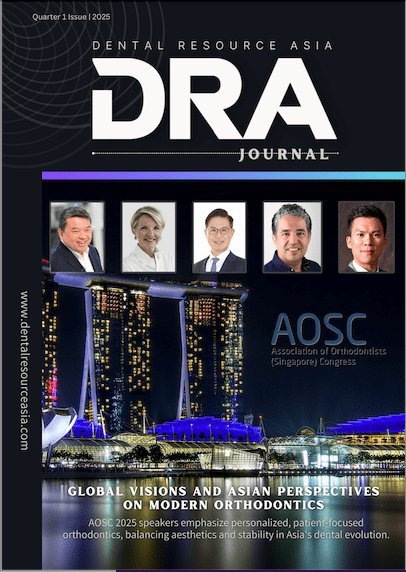In the 1960s, NASA’s Electronics Research Center in Cambridge, Massachusetts, was home to groundbreaking research in semiconductor technology. While the center’s primary focus was electronics, it inadvertently became the birthplace of a concept that would later transform dental care. According to a report published on Technology.org, Bernard Rubin, a senior scientist at NASA, was exploring crystal growth techniques for semiconductors. He discovered that growing crystals in a silica gel produced higher-quality results than other media.
Rubin and his team noticed parallels between their crystal growth process and the natural formation of hydroxyapatite, the mineral that gives bones and teeth their strength. This realization laid the foundation for a patent in 1972, proposing a method to repair teeth using hydroxyapatite crystals. Rubin later explained that the idea stemmed partly from his awareness of bone loss in astronauts during prolonged zero-gravity conditions, as cited in the report.
The Role of NASA’s Patent in Japan’s Dental Revolution
NASA’s Electronics Research Center closed in 1970, but its legacy endured. In 1974, Shuji Sakuma, founder of Tokyo-based Sangi Co. Ltd., discovered Rubin’s patent in a compilation of NASA technologies. Intrigued by the potential to repair teeth using “the same substance as our teeth,” Sakuma acquired the patent and began working on turning the concept into a practical application.
Initially, attempts to follow the patent’s prescribed method of forming hydroxyapatite in the mouth met with limited success. Growing impatient, Sakuma pivoted to developing a toothpaste directly infused with hydroxyapatite. By 1980, Sangi launched its first product, Apadent, followed by the Apagard line in 1985. As described in company history by Sangi’s president, Roslyn Hayman, Sakuma’s determination to innovate dental care was pivotal.
Hydroxyapatite Toothpaste Gains Momentum
Hydroxyapatite toothpaste gained traction in Japan, where fluoride was not widely adopted. Initially marketed as a beauty product for whitening teeth, the toothpaste saw explosive sales following a creative advertising campaign. By 1993, the Japanese government recognized hydroxyapatite as an anti-cavity agent, solidifying its role in dental care. Over time, studies have confirmed its additional benefits, including enamel restoration, plaque prevention, and oral bacteria reduction.
Sangi’s products also gained popularity abroad, finding markets in Russia, Canada, and China, with Europe embracing hydroxyapatite for sensitivity prevention. As of now, Sangi has sold over 160 million tubes of its toothpaste and exports to 25 countries.
Challenges and Global Expansion
Despite its success, Sangi faced barriers entering the U.S. market due to FDA regulations favoring fluoride-based products. However, a recent FDA approval for an anti-sensitivity toothpaste has paved the way for hydroxyapatite-based products to gain a foothold in the U.S. The global rise of hydroxyapatite toothpaste has also inspired hundreds of competitors, many following in Sangi’s footsteps.
Hayman attributes the company’s success to Rubin’s original insight: “Sakuma could never have conceived of his idea without Rubin’s revolutionary insight. We believe that we owe it all to the NASA patent.”
Conclusion
The journey from semiconductor research to a dental care innovation underscores the unpredictable intersections of science. NASA’s early exploration of crystal growth not only advanced technology but also inspired a shift in oral health practices, proving that even seemingly unrelated fields can produce transformative outcomes.
The information and viewpoints presented in the above news piece or article do not necessarily reflect the official stance or policy of Dental Resource Asia or the DRA Journal. While we strive to ensure the accuracy of our content, Dental Resource Asia (DRA) or DRA Journal cannot guarantee the constant correctness, comprehensiveness, or timeliness of all the information contained within this website or journal.
Please be aware that all product details, product specifications, and data on this website or journal may be modified without prior notice in order to enhance reliability, functionality, design, or for other reasons.
The content contributed by our bloggers or authors represents their personal opinions and is not intended to defame or discredit any religion, ethnic group, club, organisation, company, individual, or any entity or individual.

